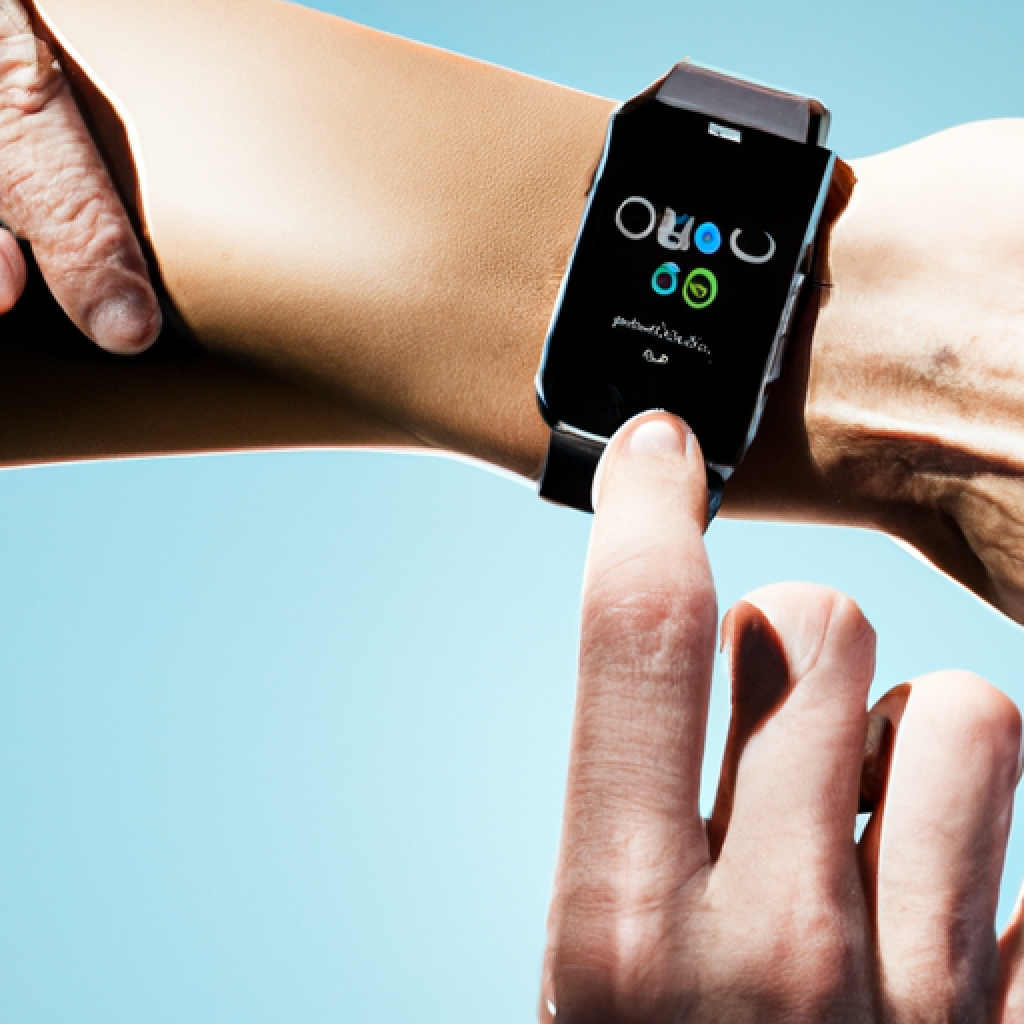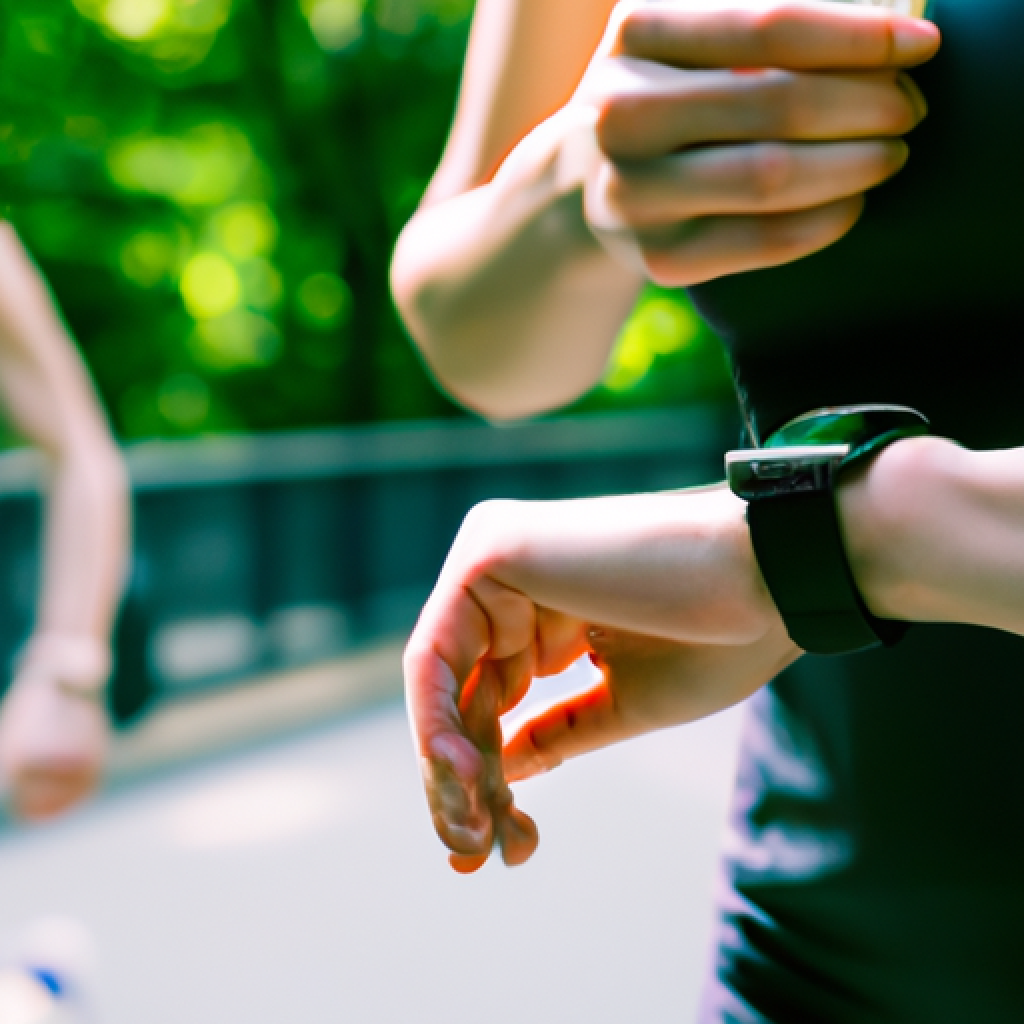What Is The Most Accurate Wearable?

I’ve always been curious about the most accurate wearable technology available today. Whether it’s tracking steps, monitoring heart rate, or measuring sleep patterns, we all want a device that provides reliable and precise data. With so many options on the market, it can be overwhelming to choose the best one. In this article, I’ll explore the various wearables and discuss which one stands out as the most accurate. So if you’re as intrigued as I am, keep reading to find out which wearable takes the crown in terms of accuracy.

Understanding Wearable Technology
Wearable technology refers to electronic devices that are worn on the body, typically in the form of accessories, clothing, or even implants. These devices are equipped with sensors, processors, and communication capabilities that allow them to collect and transmit data to other devices or applications. The main goal of wearable technology is to enhance the user’s daily life by providing real-time information, tracking various aspects of their health and fitness, and enabling convenient and seamless interaction with digital technology.
Definition of Wearable Technology
Wearable technology encompasses a wide range of devices, each serving a specific purpose. Fitness trackers, smartwatches, wearable cameras, VR and AR headsets, health monitors, and smart jewelry are all examples of wearable technology. These devices can be worn on different parts of the body, such as the wrist, head, chest, or even inserted into the body. They typically integrate sensors, such as accelerometers, heart rate monitors, GPS, and more, to capture data and provide various functionalities.
Applications of Wearable Technology
The applications of wearable technology are vast and continue to expand as technology advances. One of the most prominent applications is fitness and health tracking. Wearable devices can monitor physical activity, heart rate, sleep patterns, and even provide personalized fitness recommendations. They can also serve as reminders for medication schedules and monitor chronic disease conditions. In addition to health and fitness, wearable devices are also used in entertainment, communication, fashion, and even in industrial sectors for safety purposes.
Evolution of Wearable Devices
Wearable devices have come a long way since their inception. The evolution of wearable devices can be traced back to simple pedometers that counted steps, to more advanced devices capable of tracking a multitude of health metrics. The integration of more powerful sensors, improved battery life, and advancements in miniaturization have allowed wearable technology to become more sophisticated and user-friendly. Furthermore, the rise of smartphones and wireless connectivity has enabled wearable devices to seamlessly sync and share data with other devices, expanding their capabilities.

Types of Wearable Devices
There are several types of wearable devices available in the market, each designed for specific purposes and target audiences. Let’s explore some of the most popular types:
Fitness Trackers
Fitness trackers are perhaps the most well-known category of wearable devices. These devices are primarily used for monitoring and tracking various physical activities, such as steps taken, distance covered, calories burned, and even sleep patterns. They generally consist of a wristband that incorporates sensors to collect data and a display to provide real-time feedback to the user.
Smartwatches
Smartwatches are wearable devices that not only provide fitness tracking features but also offer smartphone-like functionalities. They typically feature a touchscreen display, allowing users to receive notifications, make calls, send messages, and even install applications. Smartwatches often include advanced sensors for tracking activities, heart rate, and GPS for navigation.
Wearable Cameras
Wearable cameras, also known as action cameras or body cameras, are designed to capture hands-free video and photo footage. These devices are commonly used in adventure sports, journalism, and law enforcement. Wearable cameras can be mounted on various parts of the body, such as the head, chest, or even attached to accessories like helmets or glasses.
VR and AR Headsets
Virtual Reality (VR) and Augmented Reality (AR) headsets are wearable devices that immerse users in virtual or augmented environments. VR headsets create a fully simulated experience, transporting users to a virtual world, while AR headsets overlay digital content onto the real world. These devices are widely used in gaming, training simulations, architectural design, and even healthcare.
Health Monitors
Health monitors are wearable devices specifically designed for monitoring various health parameters. These devices can track activities, heart rate, blood pressure, sleep patterns, and even detect abnormal heart rhythms. Health monitors are commonly used by individuals with specific health conditions or those looking to monitor their overall well-being.
Smart Jewelry
Smart jewelry combines fashion and technology, allowing users to wear devices that offer various functionalities discreetly. These wearable accessories can track fitness metrics, provide notifications, and even act as safety devices by sending alerts to predefined contacts in case of emergencies.
Factors Determining Accuracy of Wearable Devices
The accuracy of wearable devices is crucial in ensuring reliable and trustworthy data. Accuracy depends on several factors that play a role in capturing and processing data. Here are some key factors that determine the accuracy of wearable devices:
Sensor Quality
The quality and precision of the sensors used in wearable devices greatly impact their accuracy. High-quality sensors are essential for accurately capturing data, whether it’s movement, heart rate, or temperature. Well-calibrated sensors with minimal noise interference can provide more accurate measurements.
Algorithm Efficiency
The algorithms used in wearable devices play a crucial role in analyzing the data collected by sensors. These algorithms interpret and process raw data to generate meaningful metrics and insights. Efficient algorithms that account for individual characteristics, such as age, gender, and body type, can enhance accuracy by providing personalized measurements.
User Input Accuracy
Some wearable devices require user input, such as age, weight, and height, to provide accurate results. However, user input inaccuracies, intentional or unintentional, can impact the overall accuracy of the device. It is essential for users to provide accurate information to ensure reliable readings.
Device Calibration and Maintenance
Regular calibration and maintenance of wearable devices are essential to maintain accuracy over time. Calibration adjusts the sensors to ensure they are aligned correctly and provide accurate measurements. Proper maintenance, such as charging the device regularly and updating firmware, also contributes to the overall accuracy and performance.

Evaluating The Accuracy of Popular Wearable Devices
There are numerous wearable devices available in the market, each claiming to provide accurate and reliable data. Let’s take a closer look at the accuracy of some popular wearable devices:
Apple Watch
The Apple Watch has gained popularity for its comprehensive health and fitness tracking capabilities. Studies have shown that the Apple Watch provides accurate readings of heart rate and step counts. However, there have been some concerns raised about its reliability in measuring specific health parameters accurately, such as blood pressure and glucose levels.
Fitbit
Fitbit devices are renowned for their accurate fitness tracking features. Fitbit’s sensors and algorithms have been widely praised for providing precise heart rate monitoring, step tracking, and sleep tracking. Fitbit devices have undergone validation studies that have generally shown good accuracy in tracking various metrics.
Garmin
Garmin has established a strong reputation in the sports and fitness industry. Garmin devices are known for their accurate GPS tracking, heart rate monitoring, and other sports-specific metrics. The company invests heavily in research and development to ensure the accuracy and reliability of their wearable devices.
Samsung Galaxy Watch
Samsung’s Galaxy Watch series offers a range of health and fitness tracking features. While Samsung devices have shown good accuracy in heart rate monitoring, there have been some mixed reviews regarding the accuracy of sleep tracking and blood pressure measurements.
Polar Vantage
Polar Vantage watches are popular among athletes and fitness enthusiasts. These devices have been praised for their accurate heart rate monitoring, GPS tracking, and recovery tracking features. Studies have shown that Polar devices provide reliable data for various sports activities.
Whoop Strap
The Whoop Strap is a popular wearable device specifically designed for tracking and optimizing performance in athletes. It is known for its accurate heart rate monitoring and recovery tracking capabilities. The Whoop Strap has undergone independent validation studies that have confirmed its accuracy in measuring various fitness and health metrics.
Accuracy in Fitness Tracking
Fitness tracking accuracy is a crucial aspect of wearable devices as it directly impacts user motivation, goal setting, and overall fitness progress. Here are some key metrics that determine accuracy in fitness tracking:
Assessing Steps Counting Accuracy
One of the primary functionalities of wearable devices is tracking the number of steps taken. The accuracy of step counting can vary depending on the device and its sensors. High-quality sensors that can differentiate between different types of movements, such as walking, running, and climbing stairs, are essential for accurate step counting.
Heart Rate Monitoring Accuracy
Heart rate monitoring is a vital feature of wearable devices, especially during physical activities. Accurate heart rate measurements can help users optimize their workouts, monitor their exertion levels, and even detect abnormal heart rhythms. Wearable devices with optical heart rate sensors have shown good accuracy in measuring heart rate during moderate-intensity activities.
Calories Burned Accuracy
Calorie counting is an essential metric for individuals looking to manage their weight or maintain a healthy lifestyle. Accurate calorie burned estimations rely on factors such as heart rate, activity intensity, body composition, and individual characteristics. Advanced wearable devices with multiple sensors, such as heart rate monitors and accelerometers, can provide more accurate calorie burn estimates.
Sleep Tracking Accuracy
Sleep tracking is another prominent feature in many wearable devices. Accurate sleep tracking can provide insights into sleep duration, sleep stages (light, deep, REM), and sleep quality. Wearable devices with advanced sensors, such as accelerometers and heart rate monitors, combined with robust algorithms, can offer reliable sleep tracking data.

Accuracy in Health Monitoring
Beyond fitness tracking, wearable devices also play a crucial role in health monitoring, providing individuals with insights into their overall well-being. Here are some key health metrics and their accuracy considerations:
Blood Pressure Monitoring Accuracy
Some wearable devices claim to provide blood pressure monitoring capabilities. However, it is essential to note that accurate blood pressure readings typically require specialized equipment, such as an inflatable cuff and a stethoscope. Wearable devices that use optical sensors to estimate blood pressure may not provide the same level of accuracy as traditional blood pressure measurement devices.
Glucose Monitoring Accuracy
Accurate glucose monitoring is crucial for individuals with diabetes or those managing their blood sugar levels. While some wearable devices offer continuous glucose monitoring, it is important to note that the accuracy of these devices may not be on par with medical-grade equipment. These devices can still provide valuable insights but should not replace regular blood glucose testing.
ECG/EKG Accuracy
Electrocardiogram (ECG/EKG) monitoring is a valuable feature in wearable devices, particularly for detecting abnormal heart rhythms. Studies have shown that wearable devices with ECG capabilities can provide reliable and accurate readings. However, it is important to ensure that these devices are validated and meet medical-grade standards.
SpO2 Monitoring Accuracy
Oxygen saturation (SpO2) monitoring has gained attention during the COVID-19 pandemic, as low blood oxygen levels can be an early indicator of respiratory issues. While some wearable devices offer SpO2 monitoring, the accuracy of these measurements may vary. Factors such as motion artifacts, ambient light interference, and sensor quality can impact accuracy.
User Reviews and Feedback on Accuracy
User reviews and feedback play a crucial role in understanding the accuracy of wearable devices in real-world scenarios. While scientific studies and validations provide valuable insights, user experiences can shed light on various aspects that may not have been covered in controlled environments. Here are some key aspects of user reviews and feedback regarding accuracy:
Most Accurate Wearable According to Users
User reviews often highlight which wearable devices are perceived to be the most accurate. While individual experiences may vary, certain brands and models tend to receive consistently positive feedback for their accuracy in tracking various fitness and health metrics. Recognizing these user preferences can help individuals make informed choices.
Commonly Reported Accuracy Issues
User reviews may also highlight common accuracy issues experienced with specific wearable devices. These issues can range from inaccurate heart rate readings during certain activities to discrepancies in step counts. Identifying these common inaccuracies can help manufacturers improve their devices and users to make more informed decisions.
User Satisfaction with Wearable Accuracy
Understanding user satisfaction with the accuracy of wearable devices is key to assessing their overall reliability and trustworthiness. Positive user feedback and satisfaction indicate that the device is meeting expectations and providing accurate readings. Conversely, negative feedback and dissatisfaction can reveal areas for improvement.

The Importance of Accuracy in Wearable Devices
The accuracy of wearable devices is of paramount importance for multiple reasons, including user trust, medical decision-making, and data-driven lifestyle changes.
Impact of Accuracy on User Trust
Users rely on wearable devices to provide accurate data for tracking their health and fitness progress. Inaccurate readings can erode user trust and confidence in the device, leading to frustration and potential abandonment. It is crucial for wearable devices to consistently deliver accurate and reliable data to maintain user satisfaction and trust.
Role of Accuracy in Medical Decision Making
Wearable devices are increasingly being used in healthcare settings to monitor patients remotely and provide valuable data for medical professionals. Accurate and reliable data from wearable devices can aid in medical decision-making, allowing healthcare providers to diagnose conditions more accurately, adjust treatment plans, and monitor patient progress more effectively.
Accuracy in Data-Driven Lifestyle Changes
Many individuals rely on wearable devices to make data-driven lifestyle changes, such as increasing physical activity, improving sleep patterns, or managing stress levels. Accurate data is essential for setting realistic goals, tracking progress accurately, and making necessary adjustments. Inaccurate data can lead to misinterpretations, potentially hindering individuals from achieving their desired lifestyle changes.
Inaccuracy Consequences and Controversies
Inaccuracy in wearable devices can have significant consequences and lead to controversies. Here are some notable implications:
Notable Lawsuits Related to Wearable Accuracy
Several lawsuits have been filed against wearable device manufacturers alleging inaccuracies in their products. These lawsuits typically revolve around misleading claims, such as inaccurate heart rate monitoring during high-intensity activities or false advertising regarding the device’s capabilities.
Impact of Inaccuracy on User’s Health
Inaccurate health monitoring can have adverse effects on an individual’s well-being. For example, inaccurate heart rate readings during exercise can lead to improper exertion levels, potentially causing overexertion or insufficient effort. Similarly, inaccurate sleep tracking data can misrepresent an individual’s sleep quality, leading to misguided conclusions about their overall health.
Public Perception of Inaccurate Wearable Devices
The public perception of inaccurate wearable devices can have a ripple effect on the entire industry. Negative experiences and controversies surrounding inaccuracies can lead to skepticism among potential users, hindering the adoption and utilization of these technologies. Maintaining accuracy is crucial to sustain public trust and encourage wider acceptance of wearable devices.
Ensuring Accuracy in Future Wearable Devices
To ensure accuracy in future wearable devices, manufacturers and stakeholders must consider various aspects, including technological improvements, government regulation, and user education.
Potential Technological Improvements
Continuous advancements in sensor technology, algorithms, and data processing capabilities can significantly enhance the accuracy of wearable devices. Improving sensor accuracy, reducing noise interference, and optimizing algorithms for individual variations can improve the overall reliability of these devices.
Role of Government Regulation in Ensuring Accuracy
Government regulations and standards can play a crucial role in ensuring the accuracy of wearable devices. Regulators can establish guidelines and standards for manufacturers to adhere to, ensuring that devices undergo proper validation and testing before being brought to market. Regular assessments and certifications can help maintain accuracy standards and protect consumers.
Importance of User Education on Device Accuracy
User education and awareness regarding device accuracy are equally important. Manufacturers should provide accurate and transparent information about the limitations and accuracy of their devices. Users should also be educated about the factors that can impact accuracy, proper device usage, and the importance of regular maintenance and calibration.
In conclusion, wearable technology has revolutionized how we monitor and track various aspects of our health and fitness. The accuracy of wearable devices plays a critical role in their reliability, user trust, and impact on individual well-being. Understanding the different factors that determine accuracy, evaluating popular devices, and considering user reviews can help individuals make informed decisions when selecting a wearable device. Furthermore, recognizing the importance of accuracy in medical decision-making, data-driven lifestyle changes, and the consequences of inaccuracies is essential for manufacturers, regulators, and users alike. By prioritizing accuracy, we can unlock the full potential of wearable devices in improving our health and daily lives.






